The Keddie Cabin Murders – The Infamous Story of Cabin 28
Cabin 28 in the Sierra Nevada foothills became the site of a brutal crime. Investigators found a mother, her teenage son, and his friend bound and beaten, while younger children slept unharmed in the next room. One daughter was missing. Decades later, the case remains unsolved.
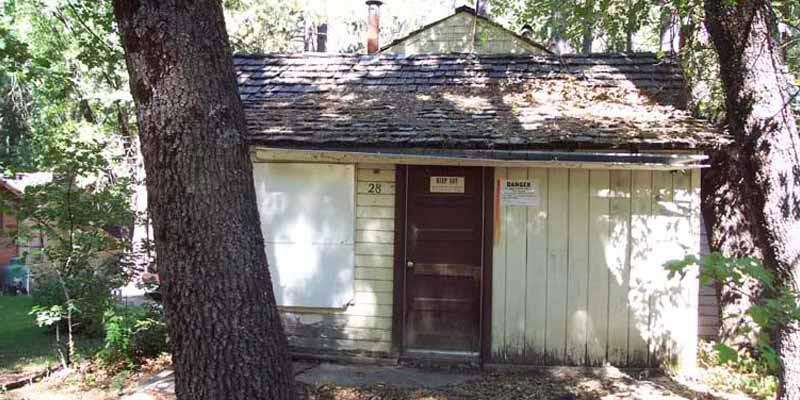
In the quiet mountain town of Keddie, California, a small wooden cabin once promised a new beginning for the Sharp family. Surrounded by the stillness of the Sierra Nevada and the calm flow of the Feather River, Cabin 28 looked like any other modest getaway — a picture of rustic peace. But in April 1981, that image was shattered. What happened inside its walls remains one of the most disturbing and infamous unresolved murder cases in American history.
Family, in its simplest form, is meant to represent safety and belonging — yet, in Keddie, those ideas were upended overnight. After the Sharps moved into Cabin 28, they dreamed of starting over, unaware that only five months later, their hopes would collapse into one of America’s most haunting and inexplicable crimes.
The concept of family is peculiar. We can all define it in our own way, but something about it always escapes clear understanding. Memories, shared moments, and silent conversations become the unseen threads that hold people together — fragile and invisible until they’re suddenly gone. A family offers stability, but also the quiet possibility of loss waiting beneath it. And when tragedy strikes, the closest a family can come to its own reflection is often through grief.
Cabin 28 was meant to mark a new chapter, a place for the Sharp family to build new memories. But the promise of that sentiment was short-lived.
A picture can still carry the weight of imagination, speculating what a Family's moments of happiness could have been. Those moments taken for granted might, unfortunately, be a precursor to the end of good times. And there is no way to see them.
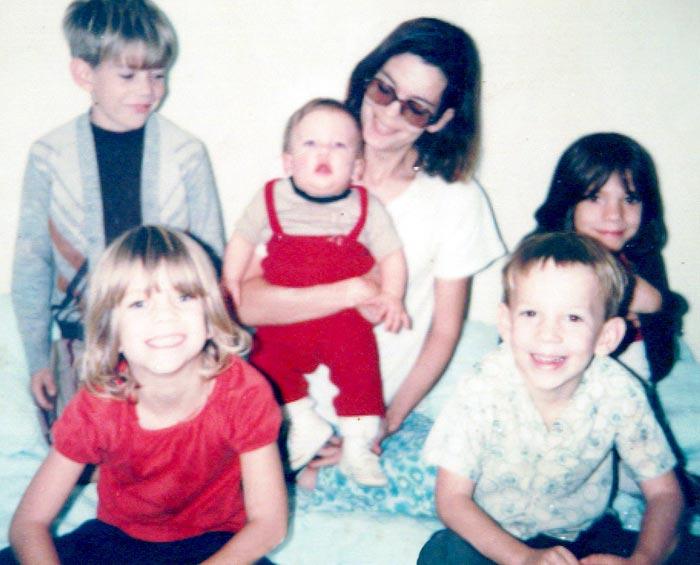
Their past life had been marked by abuse. Glenna Susan Sharp — known as Sue — fled Connecticut with her children, John, Tina, Rick, and Greg, to escape an abusive father. They traveled cross-country, staying with friends along the way, until they eventually settled in Northern California, living in a trailer once occupied by Sue's brother. It was located in Claremont Village, Quincy — a temporary stop to leave the past behind.
By the fall of 1980, Sue was eager to leave the cramped trailer and move into a converted low-income cabin in a quiet resort town in the Sierra Nevada. The town's name was Keddie, and Cabin 28 would soon become their home. The children found solace in their new surroundings, exploring the forest, streams, and nearby railroad tracks — finding small joys in the simplicity of mountain life.
Four months later, Sue's daughter Sheila returned from Oregon to reunite with the family. For a brief time, life in Keddie seemed peaceful, almost ordinary.

36-year-old Glenna Sue was a resilient woman and a devoted single mother raising her children on her own. Facing financial hardship, she relied entirely on herself to provide for her family. Determined to improve her prospects, she enrolled in a California Education Training Act program, receiving a modest stipend, and took a typing class at Feather River College as part of the program.
The money she received barely covered the rent. She also received $250 from her ex-husband, along with food stamps and social welfare. Although she wasn’t home all the time, she held onto hope for opportunities and positive change.
Sue mostly kept to herself. Those who knew her described her as attractive but quiet. The family’s new neighbors, the Meeks, soon became good friends with the Sharps. After moving to the area, it was evident that she wanted to make connections, frequently arranging meet-ups and spending time at a local bar known as The Back Door. Several of the people she met there, however, seemed at odds with her character and background.
Fifteen-year-old John, the eldest, was Sue's son from a previous marriage. He attended high school and shared a close bond with his younger siblings. At their new home, John was happier than ever; he claimed an unfinished room in the basement, adjacent to the utility area. The room could only be accessed from the outside via a back staircase.
Sue and her youngest daughter, twelve-year-old Tina, occupied the rear bedroom across from the kitchen. Meanwhile, the two younger boys, ten-year-old Rick and five-year-old Greg, shared a bedroom at the front of the cabin near the living room. Her eldest daughter, fourteen-year-old Sheila, had returned from Oregon, and Sue would sometimes sleep in a twin bed while the girls shared the queen-sized bed. Other nights, Sue slept on the pull-out couch in the living room, often falling asleep in front of the TV.
On April 11, 1981, at 11:30 a.m., Sue Sharp and her children — Sue, Sheila, and Greg — drove from the Meeks family home to pick up Rick from a baseball tryout six miles away in Quincy. On their way back, they picked up John and Dana, who were hitchhiking. After returning home, the two boys hitchhiked back to visit friends in Quincy.
That evening, Sheila left to stay overnight with the Seabolt family in Cabin 27. She planned to accompany her neighbors to church the following day, while Sue remained home with Rick, Greg, and their twelve-year-old friend, Justin Smartt.
Seventeen-year-old Dana Wingate, a close friend of John Sharp, was like an older brother to the younger Sharp children and occasionally stayed with the family. On that particular day, he planned to spend the night at their home.
At 9:30 p.m., Tina, who had been watching television at the Seabolt residence, returned home for what should have been a regular night like many before.
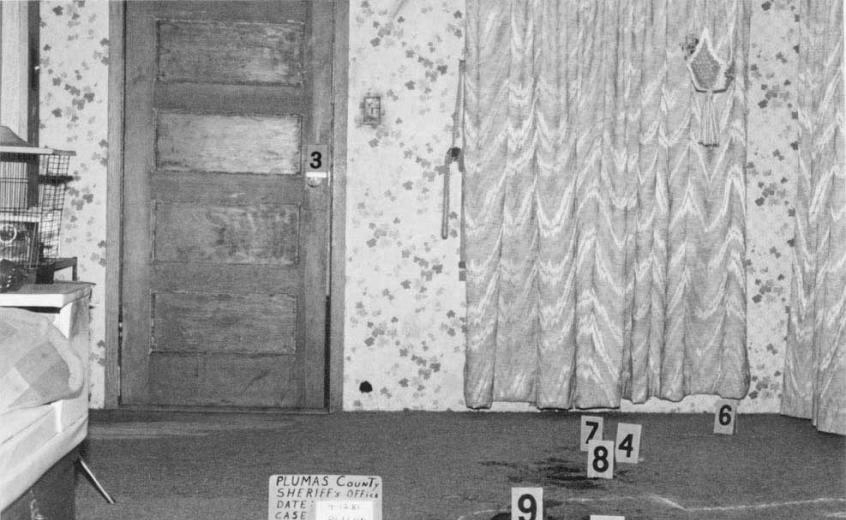
At around 8:00 a.m. on April 12, 1981, the mountains echoed with the chatter of birds. Returning from the Seabolts' house, Sheila opened the door to a grim reality no one could have been prepared for. On the living room carpet lay the bodies of Sue, John Sharp, and Dana Wingate — brutally murdered in the ransacked cabin.
Startled by the blood-soaked scene, Sheila screamed and fled to the Seabolts, seeking help, as the Sharps' home had no phone. She frantically recounted what she had witnessed, urging them to call the police.
Their neighbor, Jamie Seabolt, briefly entered the house through the back door to check if anyone remained alive. Remarkably, Rick and Greg — Sheila’s two younger brothers — along with their friend Justin, were discovered unharmed.
Authorities arrived at the Keddie Resort shortly after receiving the distress call. During the initial response, it took hours for investigators to realize that Sue’s twelve-year-old daughter, Tina Sharp, was missing.
The sheriff's office had come under scrutiny from the outset, with the investigation criticized for errors and the alleged mishandling of the crime scene.
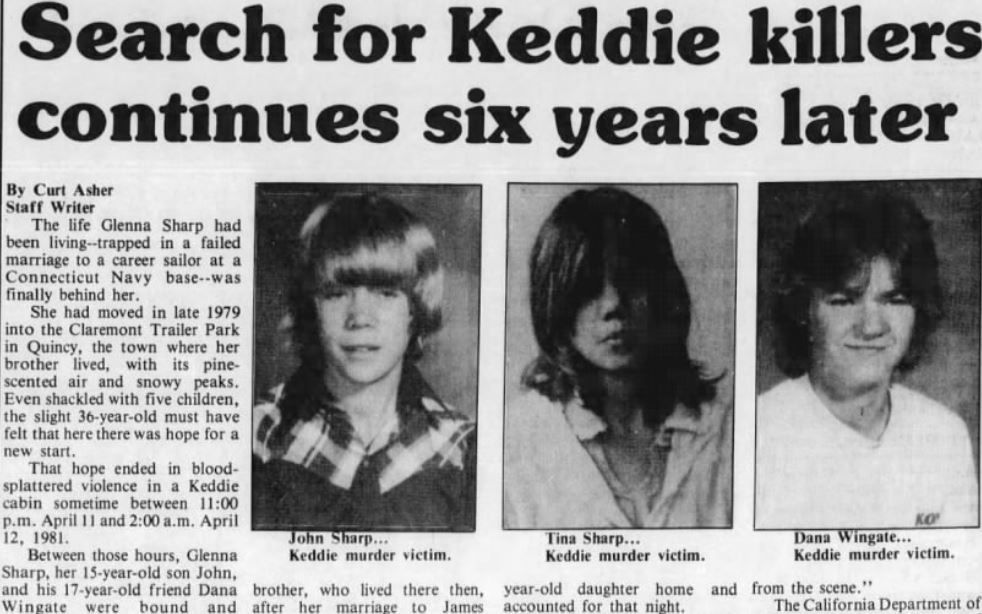
The walls have witnessed unspeakable brutality.
Inside the house, chaos reigned. Furniture was overturned, and the walls bore the marks of unspeakable brutality.
Blood spatter painted a gruesome picture, streaking across furniture, staining Sue's bedding, and smearing doorknobs. Even the ceiling was not spared, marked with crimson evidence of the violence.
Blood was also found on both bedroom doors and the handrail of the backyard stairs.
The three bodies were left on the green carpeted floor, bound with electrical cords and medical tapes not belonging to the cabin.
The injuries were so brutal that it was impossible to identify the victims by their faces.
To describe the scene as grotesque would be an understatement.
There were no signs of forced entry. A hammer, a plastic piece from a pellet gun, and two kitchen knives, including a steak knife from Sue's kitchen, were recovered at the scene, believed to be murder weapons.
A yellow blanket was draped over Sue's lifeless body near the living room sofa. She was partially nude from the waist down. Her mouth was gagged with a blue bandana, her underwear, and tape held in place with an extension cord. She had been inflicted with a chest stab wound and a blow to her head using a pellet rifle. Her throat displayed a horizontal injury that cut through her larynx and scraped her spine.
There were signs that someone had forcefully repositioned her, given the defensive injuries discovered on her arms.
Sue and John Sharp were subjected to blows from a claw hammer and multiple stab wounds in their bodies and throats.
Dana Wingate, on the other hand, suffered a beating with a different hammer. He had also been strangled to death.
The exact number of attackers involved was unknown.
The autopsy findings would later indicate that Sue and John succumbed to puncture wounds and blunt-force trauma. Dana met his demise due to asphyxiation.
They have endured horrific torment.
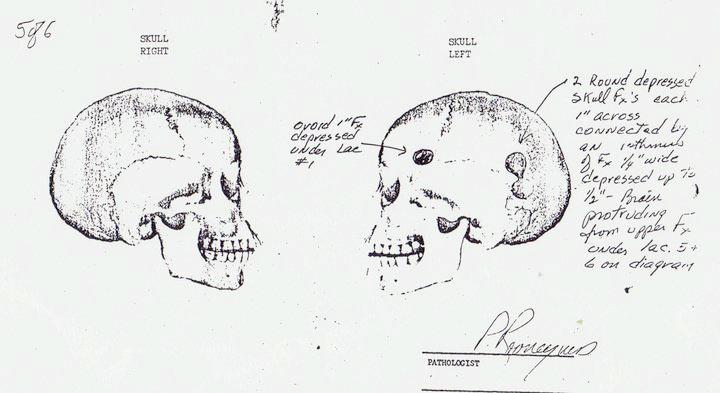
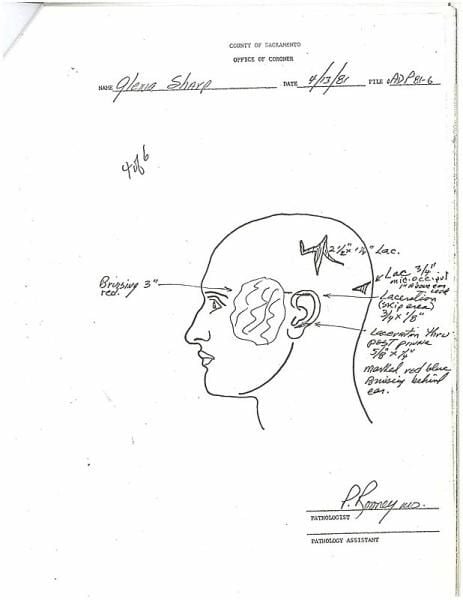
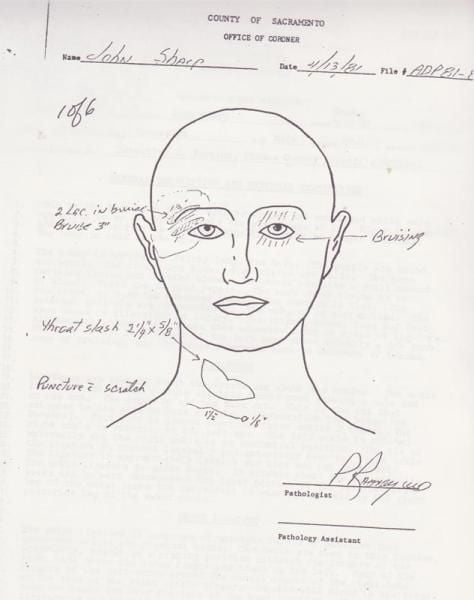
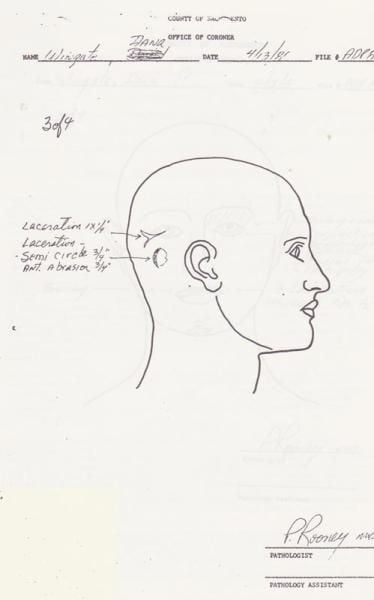
Although the sequence of events remained unknown, investigators speculated and reconstructed several narratives based on the available evidence.
Sue and her daughter might have been asleep in bed when the commotion began, as her glasses were left on the bedside table.
Sue and Tina were forced out into the living room where the atrocity took place.
Red-marked footprints suggested the victims were mobile at some point.
Lone pools of blood on the living room floor and the sofa pillow indicated that the assailants moved the victims' bodies post-mortem.
It was assumed that the victims had been taunted. Since the living room walls bore knife punctures aligned at approximately eye level.
Tina had likely witnessed the tragic demise of her family— perhaps she was the one to cover Sue with the blanket. And then forced to leave with the assailants.
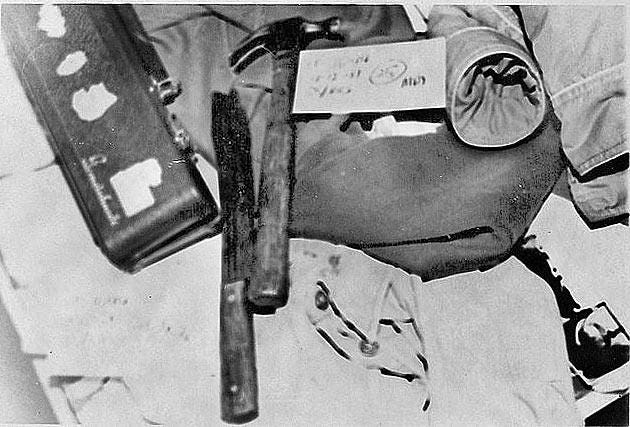
The evidence offered no clear motive, leaving investigators as baffled as the rest of the community. With answers still elusive, rumors began to circulate. Some speculated the murders were ritualistic, while others suggested a substance-related feud fueled by personal vendettas. The Plumas County Sheriff, however, dismissed any connection to drugs, saying no evidence supported such claims.
Investigators faced mounting questions about how the perpetrators gained access without leaving a trace, with attention turning to family members as theories continued to emerge. Authorities suggested that the suspect would have needed assistance to maintain control over the victims.
Clues repeatedly led to dead ends. The only remaining physical evidence consisted of DNA traces found on the medical tape used to restrain the victims. Strikingly, despite the violence at the scene, no other DNA evidence was recovered.
During the initial investigation, several residents reported seeing a green van near the Sharps' residence around 9:00 p.m. The Seabolts, with whom Sheila had stayed overnight in a neighboring cabin, reported hearing nothing unusual. However, a couple living in adjacent Cabin 16 said they were abruptly awakened at 1:15 a.m. by faint screams.
Investigators assumed that Rick, Greg, and Justin—who were in the house at the time—would have reacted to the commotion. That, however, was not the case. Rick and Greg were asleep and unaware, and Justin's account shifted over time. Authorities believed the three boys might know more than they had shared, yet fear kept them silent.
Justin Smartt provided inconsistent statements about the night of the murders. It remained unclear whether he had actually witnessed the events or if his recollections were influenced by media coverage. He described experiencing visions of the crime as though in a dream, at one point claiming to see Sue on a boat that he said resembled the cabin's living room. The traumatic experience left a severe impact on him, leaving emotional scars. It's also plausible that the intruders had threatened him. When his mother, Marilyn Smartt, discovered blood on his shoes, it lent credibility to the idea that he had undoubtedly witnessed something.
Justin underwent two hypnosis sessions in an attempt to recall details of the night. During one session, he recounted a strange dream. In it, he said, he found himself on a boat a mile from the shore, surrounded by a crowd. He described witnessing a confrontation between John, Dana, and a man with long black hair, a mustache, and black glasses. The man carried a hammer, while another similarly-dressed brown-haired individual in the crowd wielded a pocket knife. According to Justin, one of the men attacked John using a knife, threw him overboard, followed by Dana, whom he had described as being very drunk. As the dream continued, Justin ran down to the covered body lying on the bow, still surrounded by people. When he lifted the sheet, he found Sue, who had a wound in her chest. He attempted to help her with a blue-and-white flower-patterned rag as the dream ended with the men taking the life raft and Justin waking up.
It later came to light that Justin, Rickey, and Sue Sharp had been watching The Love Boat on TV before going to bed, a detail that seemed to resonate with his narrative of the incident, leaving an impression on Justin's imagination.
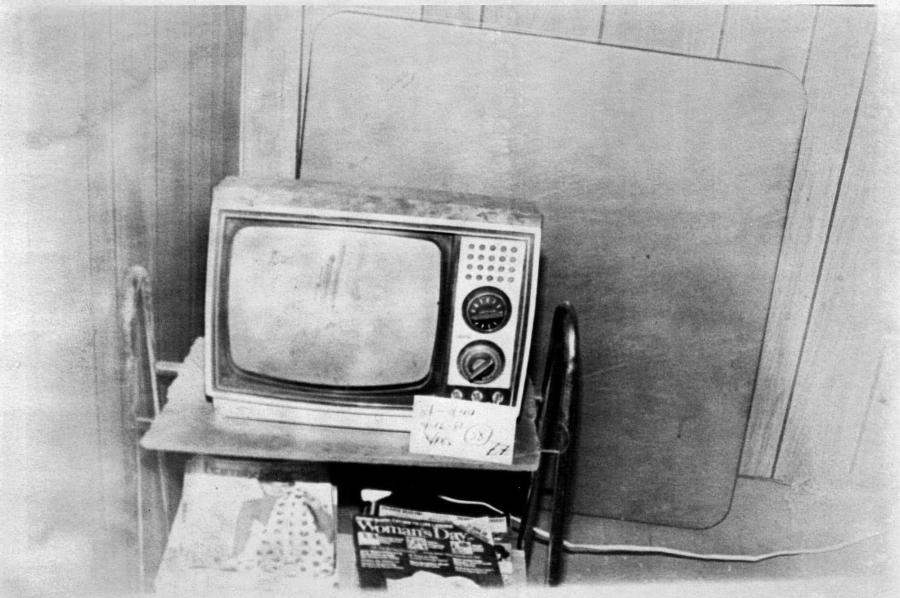
During another hypnosis session, Justin shared a vivid memory. A noise drew him to the living room doorway. There, he saw Sue lying on the sofa while two men stood in the center of the room.
Shortly after arriving home, John and Dana entered through the front door. An argument broke out between John and the two men, escalating into an altercation. Dana attempted to flee toward the kitchen, but the brown-haired man struck him with a hammer.
Sue rushed to John's aid, while Justin retreated to his room and hid behind the door. The assailants then bound both John and Dana.
Amid the chaos, Tina emerged from her room, clutching a blanket, terrified about the commotion. One of the intruders reportedly seized her, carrying her through the kitchen and down the back stairs. He later returned, retrieved the hunting knife lodged in a wall, and left again, taking the blanket with him. Later, the brown-haired suspect returned and covered Sue with a blanket.
Furthermore, Justin recounted that "Sue was cut in the middle of her chest by a black-haired man using a pocket knife." In his "dream," he rushed to Mrs. Sharp, applied a rag to her chest wound, and then returned to bed, somehow falling asleep.
The account offered little explanation for the bloodstains found on the bedding in Sue’s and Tina’s rooms.
According to Justin, a sketch artist produced composite images of the two men. The artists reportedly lacked formal training in forensic sketching. The suspects were described as being in their late 20s to early 30s.
Tina's disappearance was initially investigated by the FBI as a potential abduction. On April 29, 1981, the agency reportedly scaled back its involvement, citing confidence in the California Department of Justice’s handling of the case. A grid-pattern search covering a five-mile (8 km) radius around the home was conducted with police canines, but the effort yielded no results.
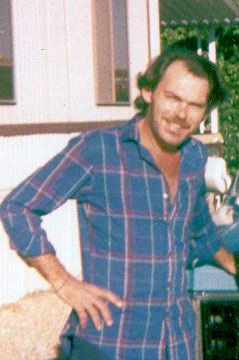
Authorities remained determined to pursue any potential leads. Based on Justin's description of the attackers, detectives identified Martin "Marty" Smartt, Justin's stepfather, as a key suspect in the cabin murders.
Shortly thereafter, Department of Justice investigators questioned the Smartts family, neighbors from Cabin 26, and their friend Severin John "Bo" Boubede, who was temporarily staying with them. Both Smartt and Boubede were Vietnam veterans and had met a few weeks earlier at the Veterans Administration Hospital, where they were receiving treatment for post-traumatic stress disorder.
During the investigation, Smartt reported that a claw hammer had been stolen from his garage. Despite lingering suspicions, a polygraph test administered to Smartt led investigators to conclude that neither he nor Boubede was involved in the murders.
Smartt's alibi placed him at the Backdoor Bar, where he worked as a chef, on the night of the killings. Off duty that evening, he visited the bar with his wife, Marilyn, and Boubede. On the way, they stopped by Sue Sharp's residence and invited her to join them, but she declined. Marilyn and Smartt had also been classmates with Sue in a typewriting course.
After spending several hours at the bar, the group left when the music shifted from country to rock, which they reportedly disliked, expressing their displeasure to the bartender before leaving. Marilyn returned home to watch television and went to bed, while Smartt and Boubede called the bar's manager to complain. They later returned to the bar for a final round of drinks, staying until shortly before closing at 2 a.m., before heading home to sleep.
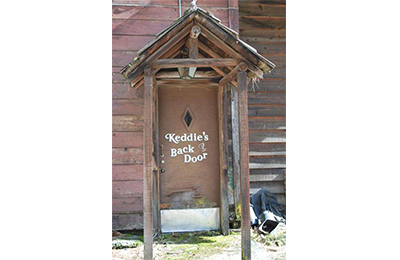
Marilyn would later be reinterviewed, during which she revealed that Martin held a grudge against John Sharp. She also admitted witnessing him burn an unknown object in the fireplace on the morning of April 12, a detail that matched another observer’s account of Martin throwing a pair of shoes into the fire without explanation.
She told investigators that she and Martin had separated the day after the murders, citing his anger issues and history of violent and abusive behavior.
Reports also described Martin Smartt as having an intense, eccentric obsession with the Bible. Some claimed he frequently preached to those he believed had immoral or "tainted" behavior.
Some investigators speculate that Martin supported himself and his family by selling illicit substances, believing that he became involved after he met with Boubede.
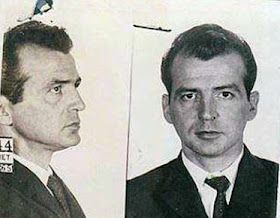
Boubede served in the Air Force and had a history marked by inconsistencies, often making claims later proven false. He asserted that he had worked as a Chicago police officer for 18 years and retired after being shot in the line of duty. However, his date of birth contradicted this claim, and his criminal record suggested a different past. He had served time in prison for bank robbery, held convictions for home invasion, and was reportedly involved in organized crime in Chicago, with ties to the Chicago Outfit mafia.
Various theories circulated about the case. Some alleged that the Department of Justice covered up aspects of the crime to protect its reputation, claiming that Boubede had served as an informant in the Reagan Administration's Witness Protection Program due to his organized crime connections. Others speculated that Bo had harbored romantic feelings for Sue Sharp and had been rejected by her.
Sue was reportedly counseling Marilyn Smartt, Martin's wife, advising her to consider leaving him due to alleged abuse and infidelity. Martin eventually discovered Sue's involvement in his marriage, a development believed to have fueled his animosity toward her. Some theories suggested that Marilyn's own envy of Sue may have contributed to tensions, as Martin reportedly paid attention to her.
Marilyn moved out of Cabin 26 the day after the murders, and shortly afterward, Martin left Keddie. She later claimed to have discovered a bloody jacket in their basement, which she believed belonged to Tina. Although she turned it over, there is no record that it was officially entered into evidence.
Marilyn also provided a letter that Martin allegedly sent 16 days after the massacre, in which he appeared to confess to the Keddie cabin murders. The letter contained a single line that drew particular attention; in it, he wrote:
"I've paid the price of your love & now that I've bought it with four people's lives, you tell me we are through." This evidence was allegedly overlooked and was not entered into the records.

While the sentence initially seemed incriminating, when viewed in the context of the letter, he expressed remorse for prioritizing Marilyn and her children over his four children from a previous marriage.
John "Bo" Boubede passed away in 1988. During the murders, he would have been in his 50s. The exact date of Martin Smartt's death is disputed; some sources indicate 2000, while others claim 2006. Smartt would have been in his early 30s at the time of the Keddie murders. Shortly after his death, a psychotherapist at the Veterans Administration whom Martin regularly visited also alleged that he had admitted to the murders of Sue and Tina. Martin justified that Sue was responsible for Marilyn wanting a divorce and boasted about beating a polygraph test. He claimed he didn't have anything to do with the two boys, allegedly telling the counselor that Tina was killed to prevent her from identifying him, as she had "witnessed the whole thing."
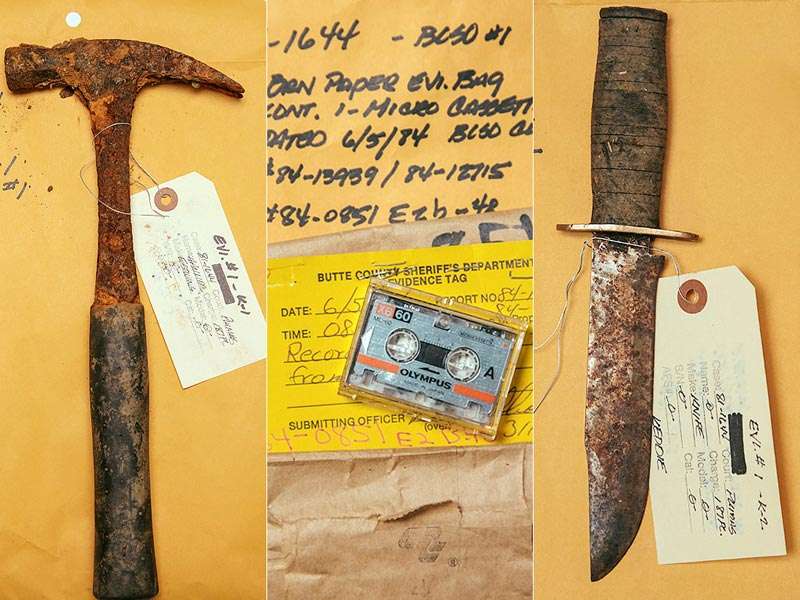
100 miles away from Keddie, in April 1984, a bottle collector stumbled upon the cranium portion of a human skull and part of a mandible in a wooded area near Feather Falls in neighboring Butte County. Later, forensic pathologists confirmed that these remains belonged to Tina.
The call, which investigators do not believe was random, took place on the third anniversary of the murders.
"Hello, I was watching the news, and they were talking about the skull they found at "the Feather Falls", and they asked for any help. And I was just wondering if they thought of the murder up in Keddie, up in Plumas County, a couple of years ago, where a 12-year-old girl was never found?" The caller said.
Following a search in the vicinity, investigators recovered a blue nylon jacket, a pair of Levi's jeans, and an empty medical tape dispenser.
As crucial as the call was, it went undocumented. Weirdly, the tape with the call recording surfaced in an evidence box in 2013, discovered by a deputy assigned to the case.
The identity of the anonymous caller remains a mystery to this day. How they knew that the remains belonged to Tina remains an unanswered question.
In 2016, a claw hammer that matched Martin's description was discovered in a local pond.
In 2018, A piece of tape containing identifiable DNA found on the floor near the body of Glenna matched that of a known living suspect. However, nothing more has been released to the public.
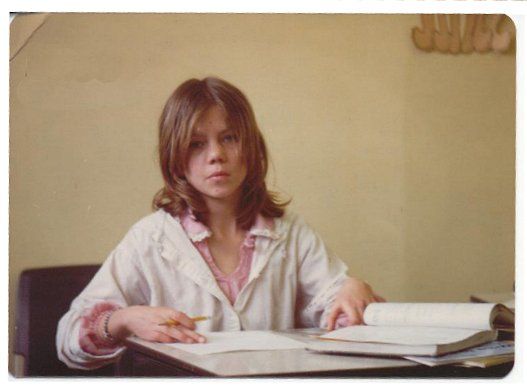
Why take Tina? Many speculated she had fallen prey to a trafficking ring. However, that turned out far from the case, as she was eventually found.
John E. Douglas, the renowned former FBI special agent and criminal profiler, suggested that the perpetrator's actions may have been driven by a deep sense of attachment and paternal concern for Tina Sharp.
Douglas theorized that Tina may have considered running away with the individual, having little remaining attachment to her new home. Many who knew her claimed she had long resisted her mother's control over the family. Some speculated that the perpetrator may have manipulated Tina's trust and suggested that she covered her mother with a blanket, possibly as a sign of guilt.
The case remained confusing, fueling ongoing speculation. Many locals smeared the Sharp family after the torturous events they had gone through. Some pointed fingers at Sheila as a potential accomplice, while others considered a drug-related angle. Carla McMullen, a family acquaintance, informed detectives that Dana Wingate had gotten into trouble with local drug dealers. She further explained that he had stolen an undisclosed amount of LSD.
However, police discovered no traces of drugs or paraphernalia inside the Sharp family's cabin, and there was no evidence linking the victims to the drug trade. Further, it appeared that Dana was not killed in the same fashion as the other two victims; in other words, less brutally.

The victims, by all accounts, could not have been less deserving of such a horrific crime. It remains deeply unsettling that justice was never fully achieved.
The actions of the perpetrators reflect a capacity to dehumanize others, particularly children, in the most disturbing ways. For these individuals, inflicting pain and suffering may have served to validate themselves and assert control. Their motives likely stemmed from a history of abuse, family dysfunction, and unresolved emotional trauma, manifesting in acts of retribution.
The sadistic component of the crime appeared fueled by a profound hostility toward the concept of a complete family, with women as the primary targets. The decision to leave the boys alive may have reflected a complex calculus—perhaps recognizing themselves in their victims, or sparing potential witnesses, or some other motive tied to their disturbed psyche.
Neither sexual desire nor financial gain appeared to motivate the killers. Instead, the crime demonstrated a compulsion to assert control, display power, and confront their own capacity for violence. Their actions reflect deep-seated anger, frustration, and rejection, manifesting in a deliberate and horrifying rejection of humanity.
The murders at Cabin 28 remain one of the most baffling and infamous unsolved crimes in California history, a grim illustration of a family's tragic demise. Sue Sharp's surviving children left the state to live with an aunt. Eventually, they entered foster care when their guardian could no longer manage additional children. The house where the murders occurred was ultimately demolished in 2004.
Murder in Cabin 28: A Look Back on the Keddie Murders | abc10.com
Keddie murders revisited part 2: Following the clues - Plumas News.
Keddie murders revisited part 3: Hypnosis, counselor's revelations, mob connections - Plumas News.
Feather River Bulletin from Quincy, California - Newspapers.com™
Cabin 28 Murders - Witness or Dream? (historicmysteries.com)
Keddie Cabin Murders: Quadruple Homicide Unsolved After 40+ Years - The CrimeWire
The Cold Case of the Keddie Cabin Murders (thoughtco.com)
John Douglas' FBI Profile of the Keddie Murders- 4 - keddie cold case (tapatalk.com)
